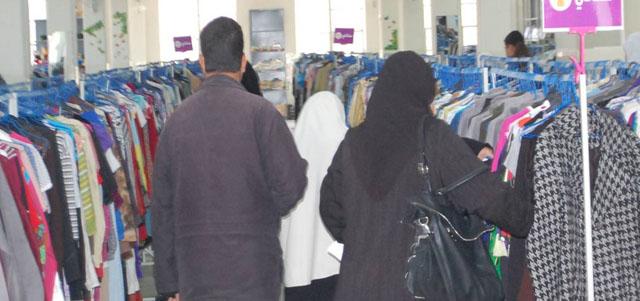You are here
Clothing Bank to benefit 15,000 vulnerable people this eid
By Maram Al Kayed - Jun 12,2018 - Last updated at Jun 13,2018
AMMAN — The Charity Clothing Bank, which is part of the Jordan Hashemite Charity Organisation (JHCO), will provide clothes and shoes to approximately 15,000 less fortunate people during this coming Eid Al Fitr.
Despite working all year long, the Charity Clothing Bank and other JHCO projects witness increased activity and a rise in donations during the holy month of Ramadan, according to the head of the Charity Clothing Bank Rawan Masaadeh.
This Ramadan, the bank held its “My Size” campaign for the fourth consecutive year, an initiative through which the Charity Clothing Bank partners with local boutiques and shops to provide clothes and shoes for the less fortunate.
Donations are accepted from individuals and companies, either in cash or in the form of clothes and shoes, Masaadeh told The Jordan Times, noting that the donations can be made at donation points distributed across several malls and points of sale around the city.
“I donated to the charity at City Mall, which is next to my house. It was an easy process, which is great because the thing that stops me from donating is always the need to drive to charities in places that are very far,” said Luna Hisham, a translator living in Amman.
Masaadeh noted that approximately 65 per cent of the clothes donated to the charity are “untouched, new material”.
“There are several big-name brands that donate out-of-season clothing that is completely new to the bank,” she said, noting that the only requirement is that the labels be removed, for company-related policies and privacy issues.
The remaining 35 per cent of used clothing is taken to the clothes sorting centre, where they go through a detailed process of sorting and categorisation, the charity head said, noting that they are then taken to contracted dry-cleaning companies which do the job for free.
People who benefit from the Charity Clothing Bank’s services are mostly individuals enlisted in the National Aid Fund and registered with local organisations, she said, noting that the bank asks the chosen families to come to the nearest bank location to pick out their items.
In cases when people are unable to reach any of the Charity Clothing Bank’s locations, the bank collaborates with local charities to distribute boxes, usually containing 100 pieces of clothing, to the area.
“When I went to donate, the boxes were overflowing with clothes, some new, but some were unappealing. I don’t think that such campaigns have control over what people donate: after all, they are just a medium. The best they can do is raise awareness and carry out [a] detailed process when picking what to give away,” said Marah Alkhasawneh, a member of a UN agency concerned with similar clothes donation campaigns for refugees.
Asked why some reviewers expressed dissatisfaction towards the clothing material on the Charity Clothing Bank’s Facebook page, Masaadeh replied: “Most people expect completely new clothes all the time, which is an unrealistic expectation to have regarding any JHCO service.”
“All our clothes are well-picked and usable, as well as being almost always new,” she concluded.
Related Articles
The Charity Clothing Bank continues to urge individuals and institutions to donate new or used clothing, toys and shoes to distribute them to needy families across the Kingdom.
The Jordan Hashemite Charity Organisation (JHCO) on Monday launched the second showroom of the Charity Clothing Bank in Southern Mazar District.
The Charity Clothing Bank, one of the Jordan Hashemite Charity Organisation’s (JHCO) projects, on Thursday received 18,000 tonnes of clothes donated by a Saudi initiative supervised by Prince Turki Bin Talal Bin Abdulaziz.

















